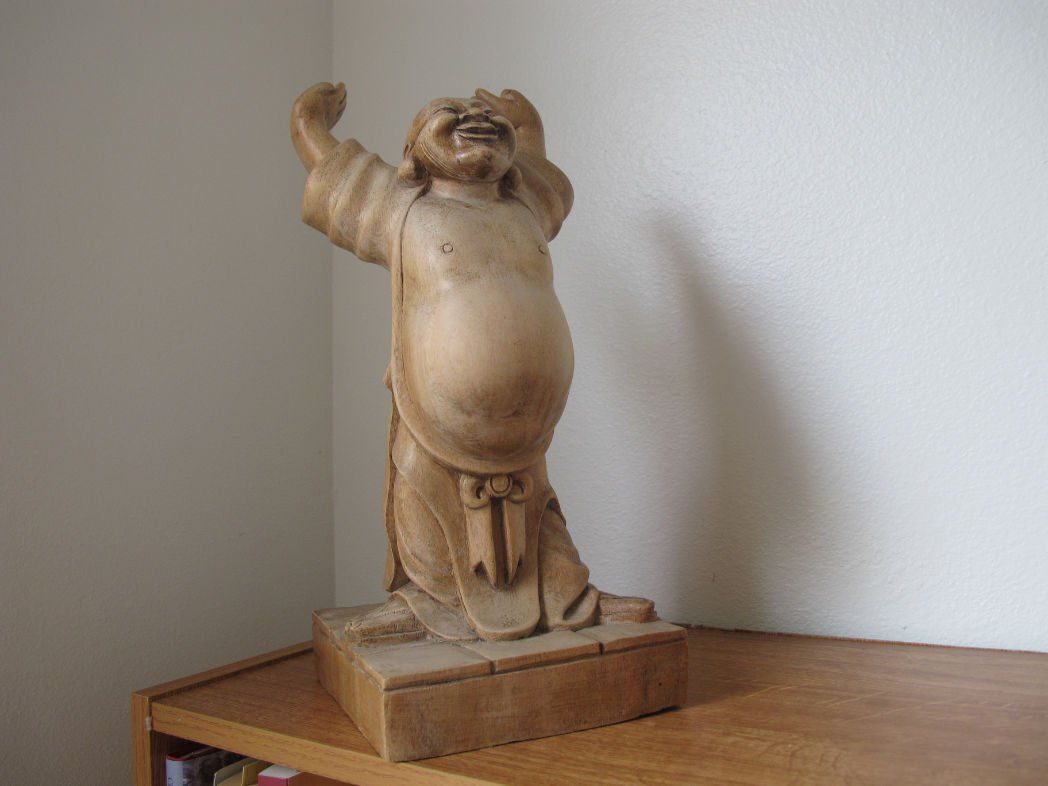No You (no self, no "I")
I have a wooden statue in my study of Hotei. On the underside of the statue’s base is written, “In China, Hotei is the god of good fortune and the guardian of children.” The statue shows Hotei exploding in joy. Let us ask, in fantasy, why he may be so joyful.

There is a well-known Buddhist document called the Bahiya Sutta. Bahiya was a revered teacher himself, who humbly came to the Buddha to ask, “Teach me the Dhamma.” The Buddha responded as follows:
Then, Bahiya, you should train yourself thus: In reference to the seen, there will be only the seen. In reference to the heard, only the heard. In reference to the sensed, only the sensed. In reference to the cognized, only the cognized. That is how you should train yourself. When for you there will be only the seen in reference to the seen, only the heard in reference to the heard, only the sensed in reference to the sensed, only the cognized in reference to the cognized, then, Bahiya, there is no you in connection with that. When there is no you in connection with that, there is no you there. When there is no you there, you are neither here nor yonder nor between the two. This, just this, is the end of stress.[1]
The Buddha refers to a condition of “no you” as being the end of the stress of life. No you is the absence of self-consciousness, I-consciousness, or ego. For a person who does not carry a sense of “I,” there is no sense of self.
In zazen, whenever the complete focus is on breathing, the sense of self disappears. Repeated experience of this eventually releases the meditator from the stress of life, as the Buddha says, the stress of being imprisoned in ego or personal self, the seat of greed, hatred, and delusion.
As for Hotei’s great joy, let’s imagine that it springs from being released from imprisonment in the ego. He’s freed, liberated. He is such a grand image of that freedom.
Footnotes
- The words in the essay can be found in the 12th paragraph of the rather long Behiya Sutta, which can be found in its entirety at this address: https://accesstoinsight.org/tipitaka/kn/ud/ud.1.10.than.html
All Rights Reserved | Zazen Essays